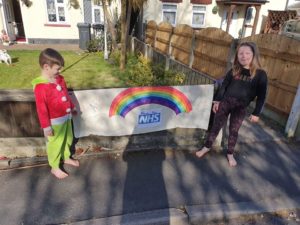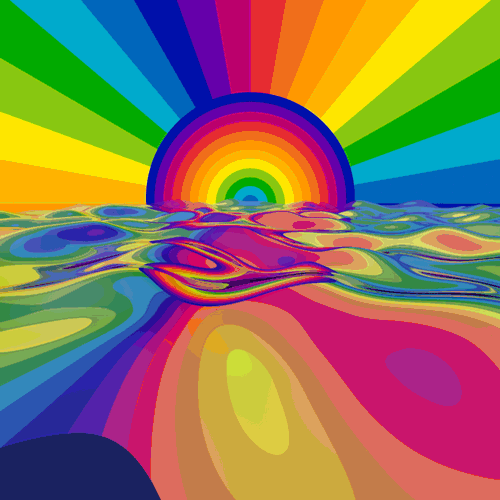When the coronavirus (COVID-19) impacted in Wuhan, China, nobody could imagine how drastically the world would change in three months. Gradually, most nations, if not all, suspended travel and any outside activity. Life as we know it disappeared, and under these new circumstances, we learned to adapt to our daily schedule and new necessities, such as the increasing demand for masks and gloves.
We constantly hear reports of increasing death rates, heightened numbers of people infected, and governments working hard to ease the situation. Despite news that may be difficult to watch, across national and international news we have also seen images of people hanging rainbow banners as a sign of support. The rainbow banners show a sign of gratitude to public health organizations and doctors who are exposing themselves by fighting the pandemic on the front lines. Some of you may wonder, why rainbows?
Take a look below to discover the secret of rainbow banners during the Coronavirus pandemic.

Where did this trend start?
The first rainbow banner picture appeared in Italy, the most affected country from the European Union with approximately nineteen thousand deaths. In major cities like Rome, Turin and Milan, Italian citizens showed their support by hanging hope messages on their balconies with a message, “Andrà tutto bene.” (Everything will be fine). Later, these banners appeared in other countries such as Spain and the United Kingdom. In the United States, children drew rainbows in solidarity, sending their warm messages to health officials and state governors who are struggling to keep their communities safe.
Rainbows are a common meteorological phenomenon that shows up in the sky after heavy rains and dark clouds. When rainbows appear, the clouds and grey sky disappear and are replaced by light blue skies and sunshine. Birds start to sing and, suddenly, there is no darkness left.

Now, symbolically, rainbows are a sign of hope, indicating that there is always a light in the dark. There shall always be a solution to a crisis. But most importantly, there is no evil that lasts a hundred years. Even though different parts of the world are universally showing rainbows as a sign of optimism, the meaning of rainbows across history has had diverse meanings.
According to BBC journalist Gaia Vince, “world cultures have sought diverse meaning in a translucent arc in the sky.” For instance, in Irish mythology, rainbows are a path where a valuable treasure is at the end of the trail. In Norwegian mythology, rainbows are bridges which connect human beings with the gods (remember the bridge that connects Asgard and Earth on Thor?).
Moreover, rainbows in some religions such as Christianity and Buddhism are signs that better times will come. We can see rainbows as a call for liberty and freedom of expression, such as the colourful flag of the LGTB+ community. Regardless of all the connotative meanings rainbows have, they embody joy and happiness not only by their meanings but also by their colours.

As the COVID-19 pandemic worsens, we need a light of hope, something that makes us realize that we will eventually survive if we follow all the guidelines, wash our hands, and take care of ourselves and family members. Law enforcement and public health officials are risking their lives to save others, only resting for a few hours before returning to their shift. Consequently, the combination of all these stressors increases public awareness and negativity.
However, once health officials and essential workers see the rainbow banners across the streets, they know who they fight for. Rainbow banners are a reminder to all people, not only those on the frontline but also neighbours, that there is always hope. Their fight against the virus will persevere until the time when we can all hug and kiss again, but most importantly, let the world know that we did it.



















